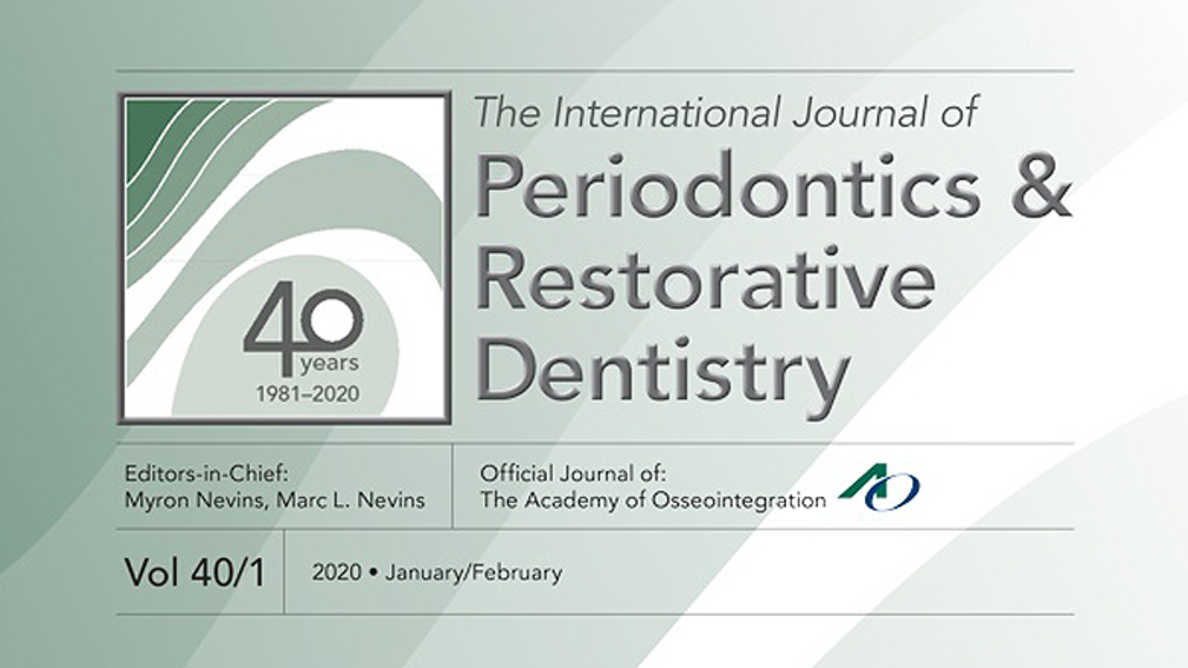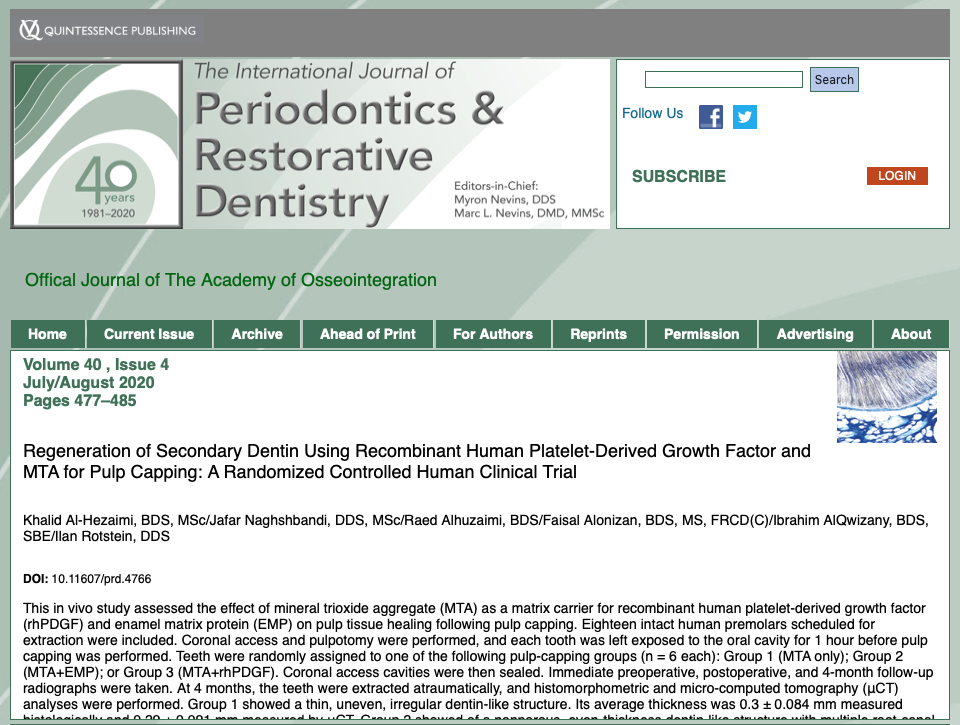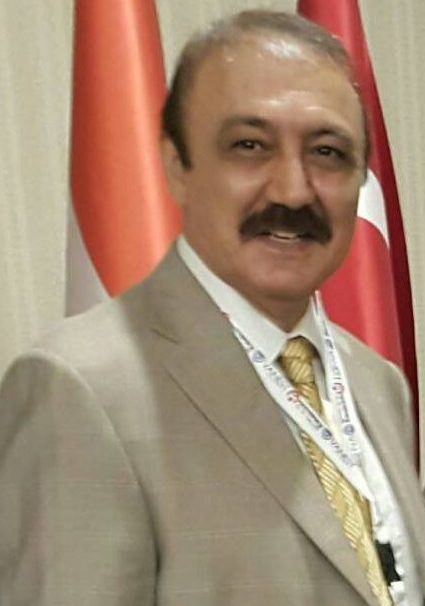Tishk International University’s faculty members engage in scholarly work that includes research published in peer-reviewed journals, academic, and professional conference presentations.We are pleased to announce that The International Journal of Periodontics & Restorative Dentistry with 1.5 impact factor in its Latest issue: Issue 4/2020, published a research article co-authored by our university faculty member Dr. Omar (Jafar) Naghshbandi school of Dentistry.We offer congratulations to Dr. Omar and his colleagues for their research recognized and published as a Featured Article.
The featured articles are selected by the journal editors as significant or likely to be of high interest to the dental society. The International Journal of Periodontics & Restorative, The Official Journal of the Academy of Osseointegration, introduces this article as “The landmark research by Khalid Al-Hezaimi and co-workers.”
Below is this article’s summary from the Issue 4/2020 of The International Journal of Periodontics & Restorative.
Featured Article
Regeneration of Secondary Dentin Using Recombinant Human Platelet-Derived Growth Factor and MTA for Pulp Capping: A Randomized Controlled Human Clinical Trial (https://quintpub.com/journals/prd/abstract.php?article_id=20361) Khalid Al-Hezaimi, BDS, MSc/Jafar Naghshbandi, DDS, MSc/Raed Alhuzaimi, BDS/Faisal Alonizan, BDS, MS, FRCD(C)/Ibrahim AlQwizany, BDS, SBE/Ilan Rotstein, DDS
This issue features landmark research by Khalid Al-Hezaimi and co-workers. In their in vivo human study, “Regeneration of Secondary Dentin Using Recombinant Human Platelet-Derived Growth Factor and MTA for Pulp Capping: A Randomized Controlled Human Clinical Trial,” the authors assess the effects mineral trioxide aggregate (MTA) as a matrix carrier for recombinant human platelet-derived growth factor (rhPDGF) and enamel matrix protein (EMP) on pulp tissue healing following pulp capping. Eighteen intact human premolars scheduled for extraction were included. Coronal access and pulpotomy were performed, and each tooth was left exposed to the oral cavity for 1 hour before pulp capping was performed. Teeth were randomly assigned to one of the following pulp-capping groups (n = 6 each): Group 1 (MTA only); Group 2 (MTA+EMP); or Group 3 (MTA+rhPDGF). Coronal access cavities were then sealed. Immediate preoperative, postoperative, and 4-month follow-up radiographs were taken. At 4 months, the teeth were extracted atraumatically, and histomorphometric and micro-computed tomography (μCT) analyses were performed. Group 1 showed a thin, uneven, irregular dentin-like structure. Its average thickness was 0.3 ± 0.084 mm measured histologically and 0.29 ± 0.091 mm measured by μCT. Group 2 showed of a nonporous, even-thickness dentin-like structure with multiple root-canal obliterations. Highly dense, atubular dentin-like structures associated with presence of odontoblastic lacunae were seen. The structure’s average thickness was 0.87 ± 0.09 mm (histologically) and 0.81 ± 0.17 mm (μCT). Group 3 showed a thick and complete 3D continuous seal of newly formed dentin-like structure covering the pulpal space. It resembled secondary dentin in form, porosity, and tubular structural organization, and its average thickness was 0.94 ± 0.02 mm (histologically) and 0.91 ± 0.09 mm (μCT). Groups 2 and 3 showed higher amounts of newly formed dentin-like structure, that was also thicker, than Group 1 (P < .05). Combination of rhPDGF and MTA resulted in a newly formed structure resembling secondary dentin. The ability to induce secondary dentin formation in human teeth with pulp exposures is an exciting finding that should be followed with broader clinical trials.
Other Dr. Naghshbandi’s scientific articles published in most prestigious international dental journals could be viewed on PubMed.
At TIU, students are taught by recognized and respected experts in their fields of study. Certainly, the creative energy of our faculty members finds its way into classroom discussions and advances student’s interest in academia and research.
For further details you can read the article from the following link :
https://quintpub.com/journals/prd/abstract.php?article_id=20361#.XzcDfS1h01I




